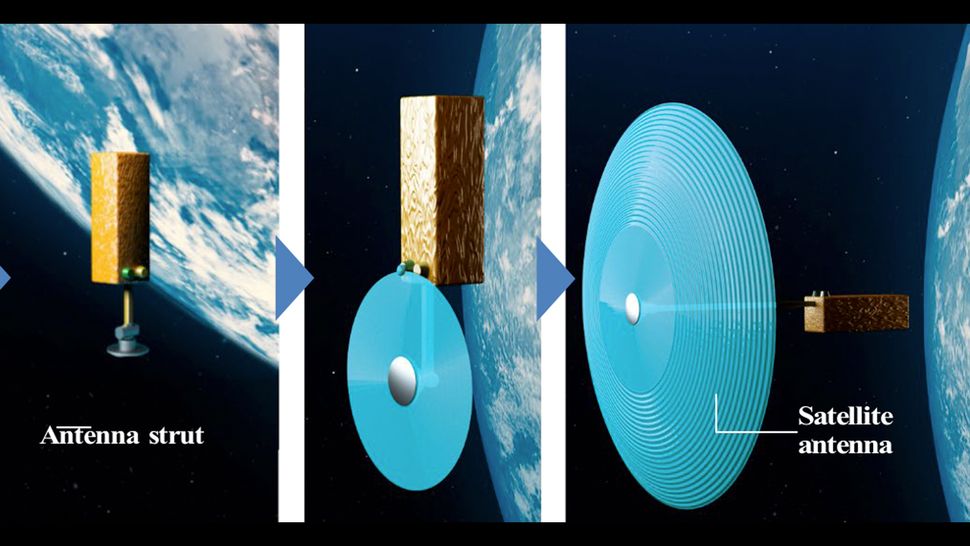3D printed satellite antennas can be made in space with help of sunlight
By Tereza Pultarova published 3 days ago

Mitsubishi has developed a technique that enables the 3D printing of satellite antennas in space.
Japanese technology firm Mitsubishi has developed a technique that makes it possible to 3D print satellite antennas in space with the help of sunlight and a specially formulated resin. (Image credit: Mitsubishi Electric Corporation)
Satellite antennas can be 3D-printed in space with the help of sunlight, using a new patented technique that promises to do away with clunky satellite parts that take up too much space in a rocket.
The new method, developed by Japanese technology company Mitsubishi Electric Corporation, uses a special type of resin that turns into a rigid solid material when exposed to ultraviolet radiation from the sun that is present in space.
The company has so far only demonstrated how the technology works in simulated space-like conditions in a test chamber. Mitsubishi researchers printed an antenna dish 6.5 inches (16,5 centimeters) wide that performed in tests just as well as a conventional satellite antenna.
The sensitivity of antennas is directly related to their size; the larger the antenna, the better it detects and transmits its signal. But the size is a problem when launching to orbit, as a large antenna takes up a great deal of space in a rocket fairing. The antennas also need to be sturdy to survive the vibrations during the launch, which makes them heavy. And the heavier a satellite is, the more expensive it is to launch.
More:
https://www.space.com/satellites-antennas-3d-printed-in-space
